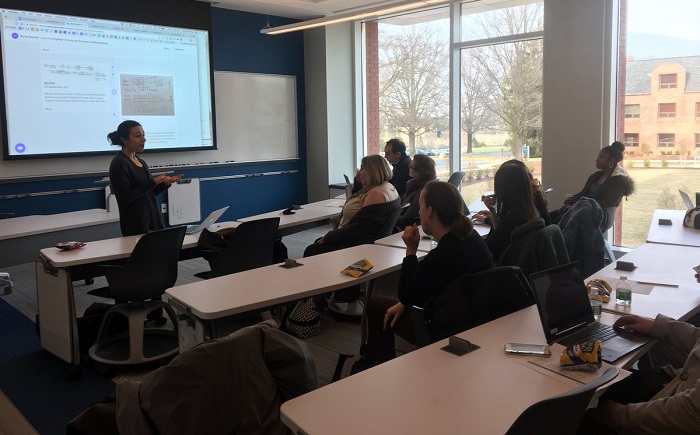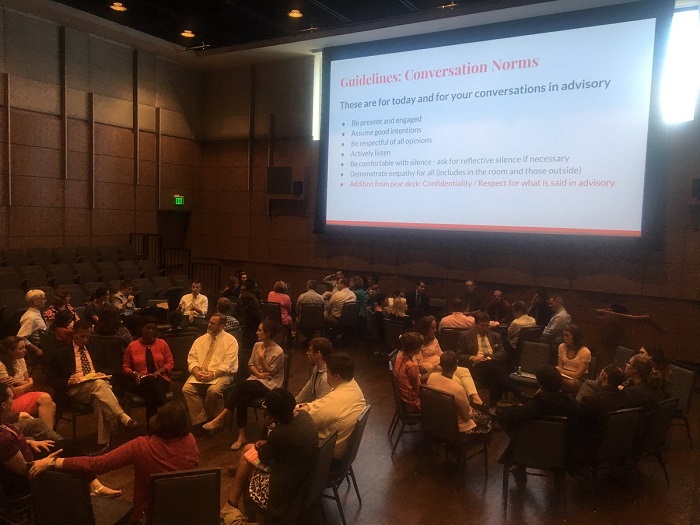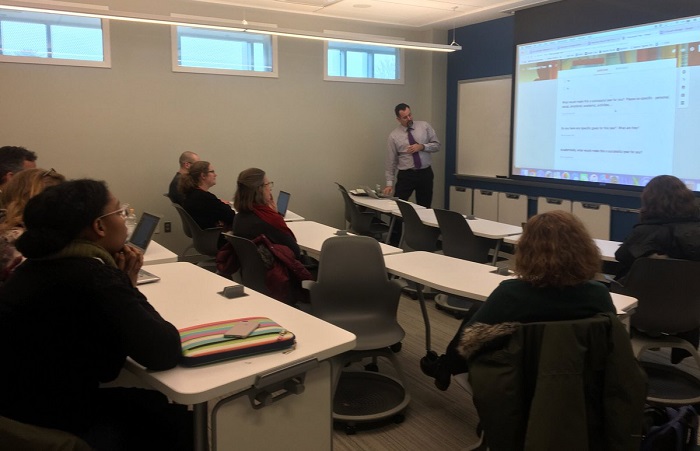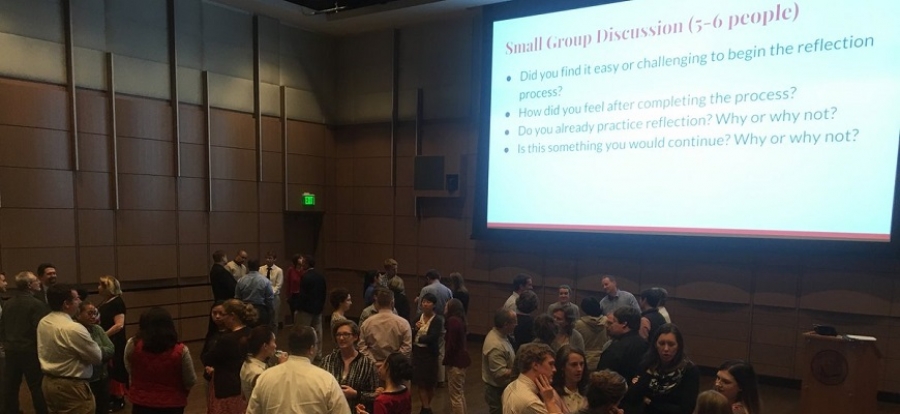We sit there either in rows of chairs like the classroom setting we are supposed to no longer use, or we are sometimes lucky enough to sit in round tables with smaller groups, but we do not always get to talk to those we are sitting with. We take notes on our devices or the old fashioned way (pen to paper) and contemplate how we can introduce these ideas / topics to our team when we return to our school.
Two books and a four-day work shop in Richmond, VA changed all this for me. After reading Simon Sinek’s Start With Why and Daniel Pink’s Drive: The Surprising Truth About What Motivates Us, I began to think differently about my work with the students and staff. “I had staff seek out members of their “family” through an ice-breaker activity.”The idea of knowing your why was a key theme for our 16-17 school year along with reflection. We added the idea of knowing your purpose to knowing your why for the 17/18 school year. I also happened to have a dynamic, interactive four-day experience in the summer of 2017 with the Leadership + Design team, which changed my approach to our staff meetings.

This past August staff walked into our meeting location to find the usual screen and projector with an opening message, but there were some key differences. For one, there were no chairs at the tables as we would be standing for the full hour. Secondly, I did not assign groups, but rather had staff seek out members of their “family” through an ice-breaker activity.
I handed a playing card to each member of the team and asked them not to share the card with anyone. The goal was to find a member of your family (diamond, spade, club, heart) and then move to a table that had the same suit (ex: diamond). There were two rules: you could only ask people two questions and you could not say the following words: diamond, mine, clubs, music, spades, shovel, heart or love. Once they found a family member, they were to look together for more family members and eventually, after five minutes, all staff would be at a table that represented only their family (eg eight people all with a diamond card).
For the next 50 minutes we stood around tables, reviewing our school mission and vision statement all while discussing whether or not they conveyed our purpose and were attached to our why. I fully understand the need and desire for teachers to get planning on the year ahead in our August meetings. However, I do not believe it is productive if you have not identified your why and your purpose beforehand.

Since that opening meeting, I have worked to provide more interactive and engaging meetings instead of the sit and get, leader in the front of the room talking. In one of our early September meetings, we did speed dating so staff could share their “effective practices” for talking with parents at Back to School night.
Our Tuesday meetings also typically now begin on the Friday before, when I send out an interactive Pear Deck thanks to the help and support of our tech guru and innovator, Stacey Roshan. The Pear Deck usually has an article for staff to read in preparation for “Staff aren’t sitting in rows and listening to someone (me!) talk at them.”the meeting, and includes questions for staff to reflect on. There may be other questions or thought-provoking statements to help establish the tone and purpose of the meeting. The most challenging aspect of this for me has been working to get the agenda and Pear Deck out several days before the meeting so staff have time to complete it. That challenge is far outweighed by the positive response of the staff, as they have time to “marinate” on the talking points / discussion that will occur in the coming days.
Our meetings which occur roughly every three weeks have changed immensely in the past 18 months, and I feel confident in saying that they have changed for the better. We have recorded and shared forward reflections in Flipgrid, held advisory workshops led by staff in small group settings, discussed how to incorporate student reflections in rotation format so multiple staff can talk with smaller groups and - most importantly - the staff are not sitting in rows of chairs and listening to someone (me!) talk at them for 45-60 minutes. If we truly want staff to create engaging, active classrooms, it has to start with us. Our presentations, discussions, conversations can no longer be one way.

If this seems overwhelming, I encourage you to start small and move forward. I certainly was not sure how these changes would be accepted or if they would enhance our meetings. I started with the topics I was clearly passionate about and that motivated me, such as knowing your why from Simon Sinek. The inspiration I found from this was visible in our discussion, and that showed our staff how serious I was about the topic. If you find something that works like Pear Deck has for me, than you need to develop the habit of sticking with it. If a new idea / tool is not working for the meeting, do not be afraid to tell the staff you wanted to try it out but decided it was not the right fit. It is an incredible message for your team to see you take a risk and have it not work. That gives them the freedom to do the same in their classroom.
Want to receive cutting-edge insights from leading educators each week? Sign up to our Community Update and be part of the action!


















